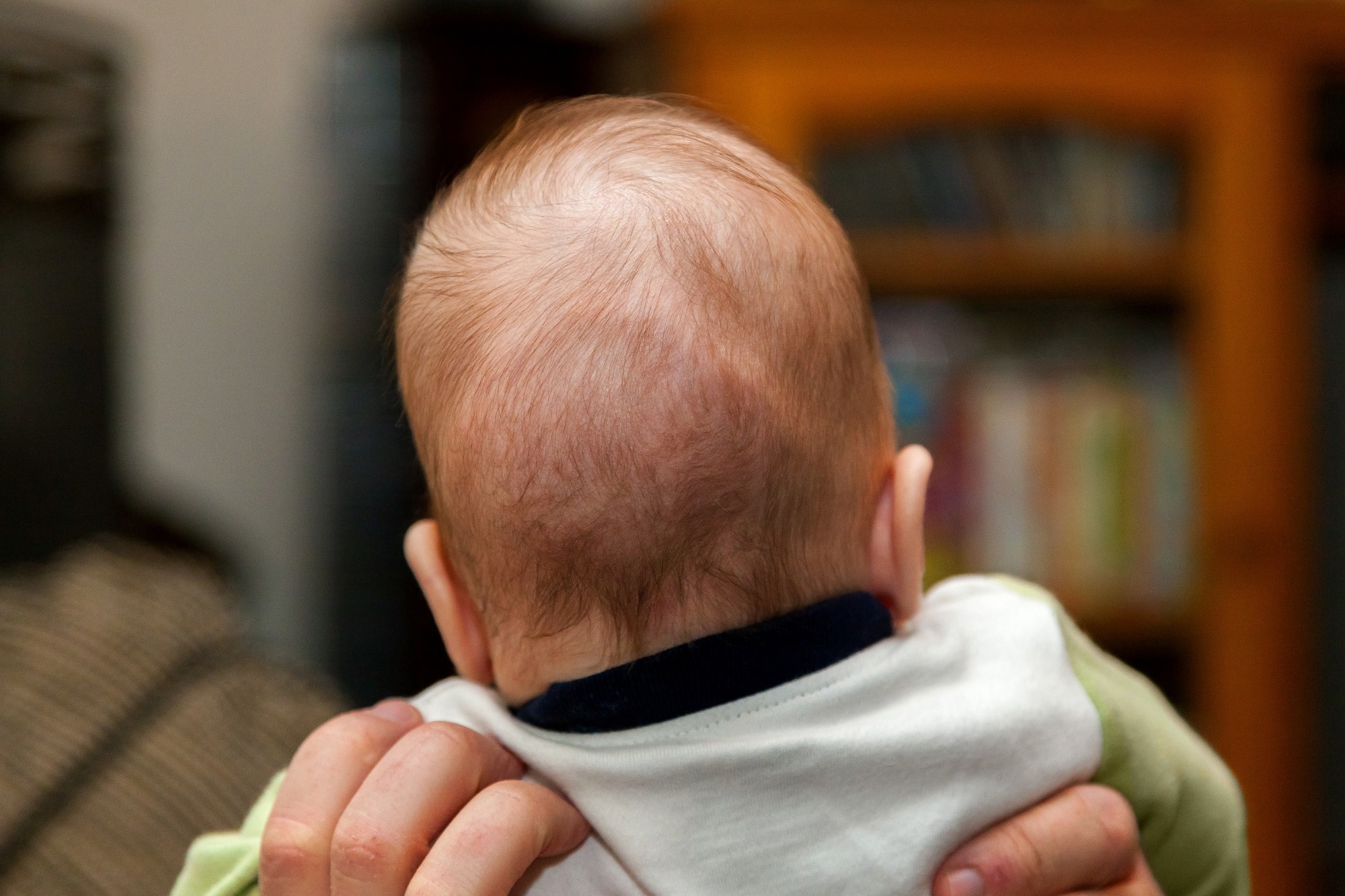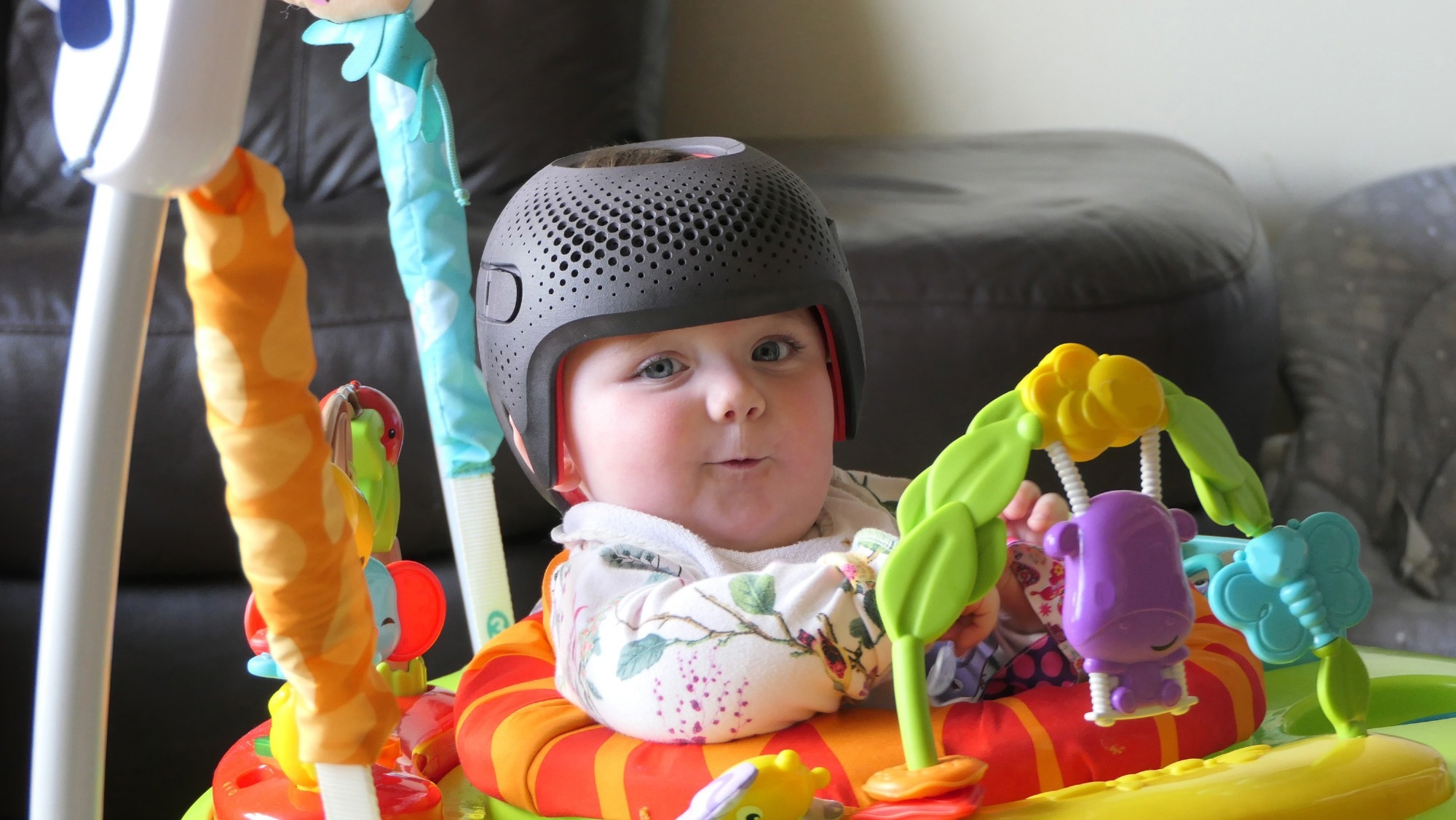What is Craniosynostosis?
Introduction
What is craniosynostosis?
What causes craniosynostosis?
What are the symptoms of craniosynostosis?
Types of craniosynostosis
What are the diagnostic criteria for craniosynostosis?
Treatment of craniosynostosis
References
Further reading
Craniosynostosis is the early fusion of the cranial sutures, which poses numerous diagnostic and medical complications. It is a frequent abnormality that affects 3–5 out of every 10,000 babies. Single gene mutations or chromosomal abnormalities are responsible for at least 20% of all cases.
Craniosynostosis is often treated with surgery to straighten the head's shape and allow for brain growth. Early detection and treatment allow for the child's brain to grow and develop to its full potential.
 Image Credit: In The Light Photography/Shutterstock
Image Credit: In The Light Photography/Shutterstock
What is craniosynostosis?
Numerous bones constitute the skull. Sutures describe the connections between bones. The premature closure of one or more sutures results in craniosynostosis.
Early suture closure could lead to aberrant cranial development. Sometimes, early suture closure might restrict overall skull growth, which can injure the developing brain.
In the absence of treatment, craniosynostosis can lead to an increase in cranial deformity, a possible restriction of head growth, and a rise in intracranial pressure. As the child matures and interacts with others, it could contribute to psychosocial issues.
What causes craniosynostosis?
Craniosynostosis is a symptom of various genetic disorders, each of which has a distinct inheritance pattern and propensity for recurrence.
It is essential that the family members of a child with craniosynostosis, as well as the family members themselves, be extensively screened for signs of an inherited genetic disorder, such as limb malformations, heart defects, or ear abnormalities.
What are the symptoms of craniosynostosis?
Typically, the indications of craniosynostosis are visible from birth, but they become increasingly prominent over the infant's first few months. Signs and severity depend on the number of fused sutures and when the fusion occurs during brain development. The indications and symptoms of craniosynostosis may include a deformed skull, the shape of which depends on which sutures are affected, and the formation of a high, hard ridge along the afflicted sutures, combined with an abnormal change in head shape.
Types of craniosynostosis
Craniosynostosis comes in a variety of forms. One cranial suture is typically fused in the majority of cases. The fusion of several sutures occurs in some complex cases of craniosynostosis. Syndromic craniosynostosis, which refers to multiple-suture craniosynostosis, is commonly linked to hereditary disorders.
The classification of each form of craniosynostosis is determined by which sutures are damaged. The following are types of craniosynostosis:
Sagittal synostosis
The sagittal suture extends over the top of the head, from the soft region near the front of the baby's head to the back of the head. When this suture closes prematurely, the baby's head will develop long and thin (scaphocephaly). It is the most typical kind of craniosynostosis.
Coronal synostosis
The right and left coronal sutures extend from each ear to the sagittal suture at the crown of the head. When one of these sutures closes prematurely, the infant may have a flattened forehead on the side of the skull where the prematurely-closing suture is located (anterior plagiocephaly). This side of the infant's eye socket may also be elevated, and his or her nose may be dragged to that side. The second most prevalent kind of craniosynostosis.
Bicoronal synostosis
This type of craniosynostosis develops when the coronal sutures on both sides of the infant's skull fuse too soon. In this circumstance, the infant's head will become broad and short (brachycephaly).
Lambdoid synostosis
The lambdoid suture traverses the back of the head. If this suture closes too soon, the infant's head may be depressed on the back (posterior plagiocephaly). This kind of craniosynostosis is one of the rarest.
Metopic synostosis
The metopic suture extends from the nose of the infant to the sagittal suture at the top of the skull. If this suture heals too soon, the baby's head may seem trapezoidal or narrow in front and broad in the back (trigonocephaly). This kind of craniosynostosis is one of the rarest.
What are the diagnostic criteria for craniosynostosis?
Genetics & Genomics eBook

The diagnostic process entails a comprehensive physical examination and diagnostic testing. Your child's doctor will begin with a thorough pregnancy and birth history, inquiring about any family history of craniosynostosis or other head or facial anomalies.
Since craniosynostosis is related to other neuromuscular issues, the doctor may also inquire about developmental milestones. Developmental delays may necessitate additional medical monitoring for underlying issues.
During the checkup, the doctor will measure your child's head circumference to determine normal and abnormal ranges. Craniosynostosis is diagnosable with a physical examination. Your neurosurgeon may recommend imaging tests if necessary.

 Read Next: What is a Rare Disease?
Read Next: What is a Rare Disease?
Treatment of craniosynostosis
Several kinds of craniosynostosis necessitate surgical intervention. The surgical technique is intended to relieve pressure on the brain, correct craniosynostosis, and permit brain growth. Typically, surgical procedures are undergone within the first year of life. However, the timing of surgery is contingent on which sutures are healed and whether or not the infant has one of the genetic abnormalities that might cause craniosynostosis.
Infants with extremely minor craniosynostosis may not require surgery. As a newborn ages and gains hair, the contour of his or her skull may become less apparent. Sometimes, special medical helmets can be used to help shape the baby's skull into a more uniform shape.
 Image Credit: Ballygally View Images/Shutterstock
Image Credit: Ballygally View Images/Shutterstock
The severity of craniosynostosis varies from infant to infant, ranging from mild to severe. The majority of infants with craniosynostosis are generally healthy. However, some children experience developmental delays or intellectual disabilities as a result of craniosynostosis or a hereditary condition that causes both craniosynostosis and difficulties with how the brain functions.
A child with craniosynostosis will need to see a doctor frequently to ensure that the brain and skull are developing normally. Typically, infants with craniosynostosis might benefit from early intervention treatments to address any intellectual or developmental abnormalities. Some children with craniosynostosis may have self-esteem issues if they are self-conscious about their physical distinctions from other youngsters. New families of infants with birth abnormalities of the head and face, such as craniosynostosis, may also benefit from parent-to-parent support groups.
References
- JOHNSON, D. & WILKIE, A. O. M. 2011. Craniosynostosis. European Journal of Human Genetics, 19, 369-376. Available at: https://www.nature.com/articles/ejhg2010235#citeas
- GOVERNALE, L. S. 2015. Craniosynostosis. Pediatric Neurology, 53, 394-401. Available at: https://www.sciencedirect.com/science/article/abs/pii/S0887899415003367
- PANCHAL, J. & UTTCHIN, V. 2003. Management of craniosynostosis. Plastic and reconstructive surgery, 111, 2032-48; quiz 2049. Available at: http://europepmc.org/abstract/MED/12711969
- KIMONIS, V., GOLD, J.-A., HOFFMAN, T. L., PANCHAL, J. & BOYADJIEV, S. A. 2007. Genetics of Craniosynostosis. Seminars in Pediatric Neurology, 14, 150-161. Available at: https://www.sciencedirect.com/science/article/pii/S1071909107000617
- Centers for Disease Control and Prevention (2020) Facts about Craniosynostosis, Available at: https://www.cdc.gov/ncbddd/birthdefects/craniosynostosis.html#:~:text=What%20is%20Craniosynostosis%3F,skull%20can%20become%20more%20misshapen. (Accessed 10 November 2022).
Further Reading
- All Baby Content
- Testing for Low Birth Weights Using Genetics
Last Updated: Dec 29, 2022

Written by
Maira Ahsan
During the coronavirus disease 2019 (Covid-19) lockdown, while pursuing a bachelor's degree in human nutrition and dietetics, Maira started her freelancing career as a content writer, focusing on the life sciences. In 2020, she started working as a freelancer on Fiverr, where she quickly found opportunities to work with several Canadian companies.Maira received an offer for a nutritionist position from a French hotel in Canada, where she was responsible for developing nutrition-based recipes and calorie-counted meals.
Source: Read Full Article
